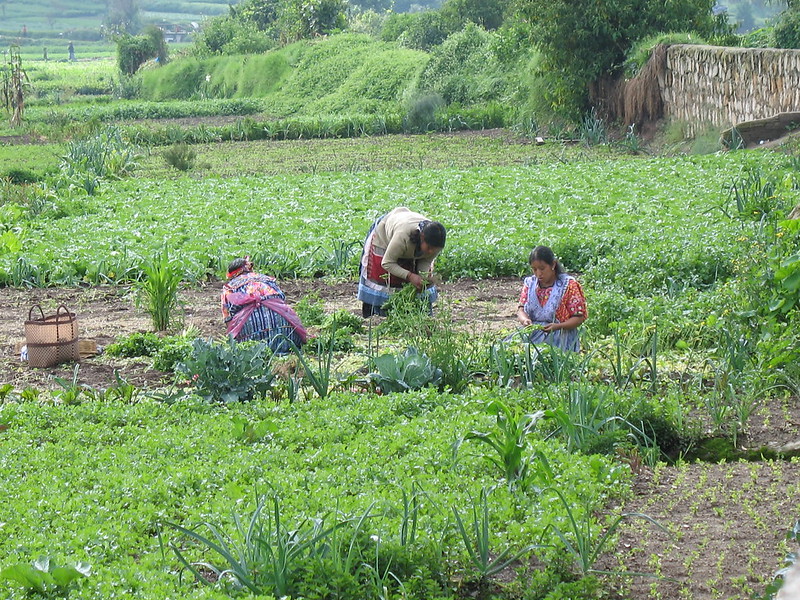Maya Ch’orti’ in Guatemala: Combating Food Insecurity
 In the mountainous regions of eastern Guatemala, the Maya Ch’orti’ people are reviving centuries-old agricultural practices to combat food insecurity and poverty. These Indigenous communities have faced significant challenges, including land degradation, the changing climate and limited access to markets. With support from organizations like Slow Food International and its Indigenous Terra Madre network, the Maya Ch’orti’ people are reintroducing sustainable farming methods. These traditional methods not only preserve their cultural heritage but also offer a sustainable pathway out of poverty.
In the mountainous regions of eastern Guatemala, the Maya Ch’orti’ people are reviving centuries-old agricultural practices to combat food insecurity and poverty. These Indigenous communities have faced significant challenges, including land degradation, the changing climate and limited access to markets. With support from organizations like Slow Food International and its Indigenous Terra Madre network, the Maya Ch’orti’ people are reintroducing sustainable farming methods. These traditional methods not only preserve their cultural heritage but also offer a sustainable pathway out of poverty.
The Challenge of Food Insecurity
Guatemala is one of the most food-insecure countries in Latin America. More than half of the population enduring multidimensional poverty and rural Indigenous communities like the Maya Ch’orti’ are disproportionately affected. Historically, the Maya Ch’orti’ practiced sustainable agriculture, growing maize, beans and squash using traditional intercropping methods. However, the combination of modern agricultural pressures and environmental degradation led to the decline of these practices. Furthermore, this has resulted in poor crop yields and increased poverty.
Currently, the changing climate exacerbates these problems. Changes in the climate make it more difficult for the Maya Ch’orti’ to grow enough food to feed their families. Many households struggle with malnutrition and limited income, perpetuating a cycle of poverty that spans generations. This is where Indigenous agriculture in Guatemala comes into play, reviving ancient methods to address food insecurity.
Reviving the Milpa System
In response to these ongoing challenges, organizations like Slow Food International have stepped in to help the Maya Ch’orti’ reclaim their traditional agricultural knowledge. Slow Food International is a global organization dedicated to preserving local food cultures, promoting biodiversity and supporting sustainable agriculture by empowering communities, including Indigenous peoples, to maintain traditional farming practices and protect their natural resources.
With funding and technical assistance from the Indigenous Terra Madre network, the community is reintroducing the Milpa system, a traditional intercropping method that involves planting maize, beans and squash together. This system, a core example of Indigenous agriculture in Guatemala, is proving to be an effective solution for increasing crop yields and improving soil health.
The Milpa system is highly sustainable: maize provides a structure for beans to climb, beans fix nitrogen in the soil to improve fertility and squash leaves cover the ground, preventing weeds and conserving moisture. This method has sustained the Maya people for thousands of years and is now being revived to improve food security and resilience in the face of the changing climate.
Economic and Social Benefits
The reintroduction of the Milpa system has profoundly impacted the Maya Ch’orti’ community. The system enables families to produce more food and diversify their crops. This enhances nutrition and reduces reliance on market-bought goods, boosting food sovereignty and shielding the community from food price fluctuations. The revival of traditional agriculture not only improves food security but also creates economic opportunities for the Maya Ch’orti’. With support from Slow Food International, farmers connect to national and international markets that value organic and heritage crops. Selling surplus produce allows families to earn sustainable incomes and lift themselves out of poverty, revealing the broad benefits of Indigenous agriculture in Guatemala.
Empowering Women and Community Resilience
A critical aspect of Slow Food International’s support has been the empowerment of women within the Maya Ch’orti’ community. Women play a central role in traditional food production. By giving them access to resources, training and markets, the project has enabled them to take leadership roles in the agricultural economy. This has not only improved food security but also enhanced gender equality and economic independence for women in the community. Additionally, the project has helped strengthen the community’s resilience to the changing climate.
The Milpa system’s ability to improve soil health and retain moisture makes it more adaptable to changing weather patterns. By revitalizing these Indigenous practices, the Maya Ch’orti’ are better equipped to withstand environmental challenges and ensure their long-term survival. This initiative highlights how Indigenous agriculture in Guatemala can potentially offer a sustainable solution to global challenges.
Looking Ahead
The revival of traditional agriculture among the Maya Ch’orti’ people, supported by Slow Food International, highlights the potential of Indigenous-led solutions to tackle global food insecurity and poverty. The Maya Ch’orti’ combine cultural knowledge with modern support to forge a sustainable future for their community. This initiative’s success demonstrates that investing in Indigenous agriculture in Guatemala preserves biodiversity and cultural heritage. Furthermore, it offers a viable solution to pressing global challenges.
– Safa Musa
Safa is based in London, UK and focuses on Global Health for The Borgen Project.
Photo: Flickr
